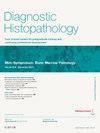将基于 DNA 和 RNA 的测序技术应用于临床实验室中的肿瘤组织样本
引用次数: 0
摘要
下一代测序(NGS)技术已成为研究领域不可或缺的工具,它推动了基因组学的发现,加深了我们对导致人类疾病的基因组变化的了解。NGS 技术具有巨大潜力,可提供宝贵的基因组数据,用于改善临床诊断和提供精准医疗。在过去的十年中,NGS 已经应用于遗传性和体细胞性疾病的临床治疗。虽然 NGS 在临床中具有巨大潜力,但将其应用于癌症却面临着技术和后勤方面的诸多挑战。我们必须考虑这项技术的作用,以及如何在患者治疗过程中更好地使用它。在这篇综述中,我们介绍了目前临床实验室常规使用的技术,并对这些技术在实体瘤检验中的应用进行了深入探讨。本文章由计算机程序翻译,如有差异,请以英文原文为准。
Application of DNA- and RNA-based sequencing techniques to tumour tissue samples in the clinical laboratory
Next-generation sequencing (NGS) technologies have become an indispensable tool within the research field driving genomic discoveries and furthering our understanding of the genomic changes that lead to human disease. NGS technologies have great potential to provide invaluable genomic data that can be used to improve clinical diagnosis and the delivery of precision medicine. Over the past decade NGS has translated into the clinical setting for both hereditary and somatic indications. Whilst it has great potential in the clinic, the application of this technology for cancer faces a number of challenges, both technical and logistic. Consideration must be given to the role of this technology and how it is best used in the patient pathway. In this review we describe the current technologies routinely used in the clinical laboratory and provide insights into their application in solid tumour testing.
求助全文
通过发布文献求助,成功后即可免费获取论文全文。
去求助
来源期刊

Diagnostic Histopathology
Medicine-Pathology and Forensic Medicine
CiteScore
1.30
自引率
0.00%
发文量
64
期刊介绍:
This monthly review journal aims to provide the practising diagnostic pathologist and trainee pathologist with up-to-date reviews on histopathology and cytology and related technical advances. Each issue contains invited articles on a variety of topics from experts in the field and includes a mini-symposium exploring one subject in greater depth. Articles consist of system-based, disease-based reviews and advances in technology. They update the readers on day-to-day diagnostic work and keep them informed of important new developments. An additional feature is the short section devoted to hypotheses; these have been refereed. There is also a correspondence section.
 求助内容:
求助内容: 应助结果提醒方式:
应助结果提醒方式:


